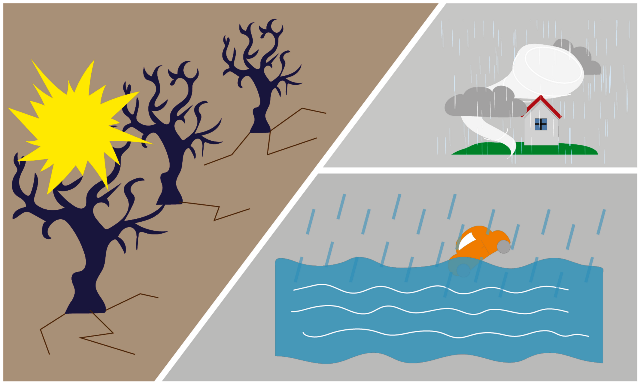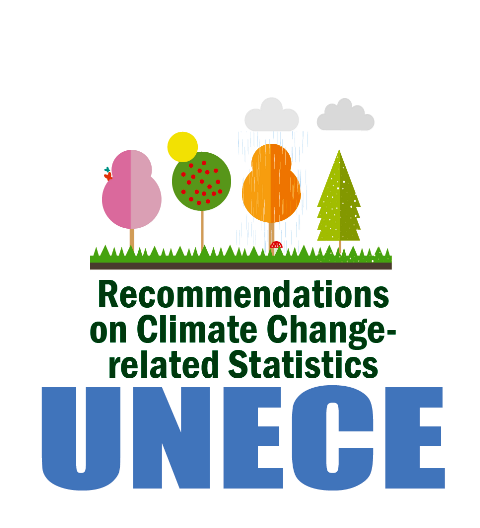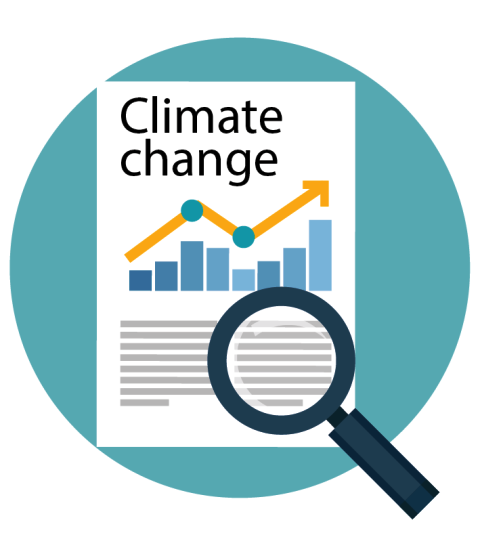
Relentless heat waves in India, disastrous droughts in Maldives and Africa, severe flooding in Southern France and Nordic countries… In 2015, as in recent years, no region in the world has been immune to the devastating effects of extreme climate episodes. And as the climate changes, the frequency and magnitude of these extreme events are only expected to increase.
Statistics on the occurrence of these extreme events and the people and infrastructure at risk are essential for disaster risk management and saving lives.
When an extreme event results in a significant disruption of the functioning of society we call it a disaster. What kind of information is vital to save lives when a disaster strikes?
At first glance, the first questions that come to mind are: How many people are affected? How many are at risk? How many impaired or elderly live there? What relief means are available or can be rapidly mobilized? Immediate action is required and being efficient relies on accurate, up-to-date, ready-to-be-used information.
After facing the first impact, new challenges need to be evaluated: Will the food, water and electricity production and supply be affected? How many houses or roads need to be reconstructed? What are the social and economic impacts?

The data to answer these questions, and many more, are gathered on a regular basis by national statistical systems. But they have to be made available immediately in the right format. Statisticians often have the right information, but they need to create a set of key data ready for immediate use if a disaster hits. Even better, this “toolkit” should be comparable across countries, which would make it easier for statisticians to compile and for humanitarian workers to use around the world.
In order to fill this gap, UNECE is leading international work to make official statistics fit for measuring climate change, supporting disaster risk management and measuring extreme events and disasters. We are doing this together with the United Nations Framework Convention on Climate Change, the United Nations Office for Disaster Risk Reduction, the World Meteorological Organization and others.
Official statistics are also needed for preventive action related to extreme climate and weather events. UNECE is working with international organizations, national statistical offices and environmental agencies to develop a set of indicators for analysing the main drivers of climate change, measuring the impacts of climate change, and showing the effects of mitigating and adaptation measures. To reduce disaster risk and build resilience by improving the quality of houses, roads and bridges, we need to know which populations live in areas prone to storms or flooding, their housing conditions and the nature of the infrastructures in these areas.

UNECE coordinates international efforts of statisticians, climate and environment experts in this area. This work already resulted in 2014 in the adoption, by more than 60 countries and a number of international organizations, of
Recommendations on Climate Change-Related Statistics which are the first ever tool for improving official statistics for climate change analysis.
This work is also vital for harnessing the expertise of the statistical community for reporting under the United Nations Framework Convention on Climate Change. The binding reporting requirements, including on greenhouse gas emissions, rely on official statistics on energy, waste, argiculture, forests, land use and industrial processes.
While many climate-change related data are already available, more work is needed. The current data gaps could affect our lives as the decisions made today define our future possibilities. Today’s choices need to be based on the best possible statistics produced under strict quality principles that provide objective and impartial information at the right time.
UNECE work in this area aims at developing:
- A road map for countries to develop better information related to climate change
- A web portal showcasing countries’ innovative practices and services to inform climate policies
- A set of key indicators to monitor climate change, its impact and measures taken that all countries could produce in a comparable way all around the world
- Recommendations for using official statistics to support disaster risk reduction
This work will contribute to making our environment a safer place to live.

